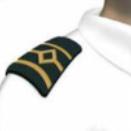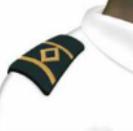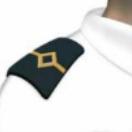On an LNG ship every crew member have their own specific duties. Deck officers are primarily responsible for the safe navigation of the vessel, ensuring adherence to maritime regulations, and overseeing cargo operations such as loading, stowage, and discharge. Meanwhile, engineers are tasked with maintaining and operating the ship’s machinery and propulsion systems, ensuring their proper functioning to support safe navigation and efficient cargo operations. Both roles collaborate closely to ensure the overall safety and efficiency of the vessel.
Reference: SIGTTO “LNG Shipping Suggested Competency Standards”, Sections:
1 Have an awareness of own responsibilities:
- Carry out own responsibilities.
- Report any defects or abnormalities promptly to the appropriate person.
2 Know and understand own and others individual responsibilities:
- Clearly delegate duties as appropriate to rank and ability.
- Ensure that duties are fully carried out.
- Ensure that full and complete records are maintained.
The immediate responsibility for the overall safety of the ship and those on board rests with the Master. The employer has overall responsibility for the safety of all persons on board.
Each crew member must ensure the safety of those items within their control. This includes ensuring that any defects or unsafe situations encountered are reported and safely rectified. All items and personal protective equipment provided for the safety of the crew and the environment should be used.
Safety, including that of those around you, is the responsibility of everyone on board.
The roles and responsibilities of the officers on board will vary from ship to ship according to the company operational procedures. Typically, the following applies:
Deck Officers
Master. The Master has overall responsibility and authority for all activities within the ship and has particular accountability for:
| Master responsibilities | ||
|---|---|---|
| Epaulette |  | |
| Management | Operations | People |
| The safe and efficient operation of the ship | Overall operational safety | Ensuring the welfare of all personnel |
| Chairing the management team and the safety committee | Ensuring the company’s operational policies are strictly observed | Onboard occupational safety |
| Adhering to international, State and company regulations | Carriage and care of the cargo in accordance with the requirements of the charter party and the terms of the SPA | Ensuring that all crew possess the correct and valid certificates (and endorsements) as required by legislative and regulatory requirements |
| The management of any health, safety, security and environmental issues on board | Ensuring that draughts, trim, bending moments and shear forces remain at all times within allowable limits | Ensuring that onboard development and training are managed, delivered and outcomes monitored |
| Reporting of deficiencies and any other items that could affect the safe operation or pollution prevention capabilities of the ship to the company | The safe navigation of the ship at all times, including those periods when a pilot is on board | |
| All onboard activities and administration | Victualling | |
| Protecting the commercial interests of the owners and charterers. The Master is the owner’s representative on board | Ship’s accounts | |
| The operational performance of the ship | Ship’s communication | |
| Overall management of all emergency situations | Implementing recommendations from the shipboard safety committee | |
| Ensuring the overall maintenance of the ship | Implementing the Company’s Safety and Environmental Policy | |
| Controlling expenditure against budget (depending on company policy) | Ensuring that the ship complies with legislative and regulatory requirements (for example, MLC, Loadline Convention, MARPOL, etc.). | |
| Preparing and subsequently ensuring periodic reviews of all on board contingency plans | ||
| Ensuring that all crew members understand and are capable of carrying out their own responsibilities in a safe manner | ||
| Reviewing the SMS in accordance with company/ISM Code requirements and reporting any identified deficiencies, non-conformities and suggestions for improvement to shore management | ||
No company manual should ever remove from the Master their responsibility to take any action they deem necessary for the protection of life, the environment or the safety of their ship.
Chief Officer. The Chief Officer is the Master’s deputy and second in command, responsible to the Master for the care and carriage of the cargo, particularly during Terminal Operations for LNG or LPG Carrier after Arriving in Portcargo operations and ensure the safety of all personnel. In conjunction with the Chief Engineer, they should supervise the maintenance of all cargo and deck fittings.
| Chief Officer responsibilities | ||
|---|---|---|
| Epaulette |  | |
| Management | Operational | |
| Responsible for the overall planning of all cargo activities | Will usually be on day work, but depending on the company policy, may also keep navigational watches | Pollution prevention requirements |
| In overall charge of cargo loading, cargo discharge and ballasting/deballasting operations | Preparing cargo loading/discharging plans | Training and familiarisation of all deck officers to ensure that they understand the correct use and operation of the ship’s cargo handling equipment |
| Ensuring that the draughts, trim, stability, bending moments and sheer forces remain at all times within allowable limits | Direction of day to day work activities of the deck department | Maintenance of fixed and portable gas detection apparatus, assisted by the cargo/gas engineer where appropriate |
| Ongoing deck maintenance | Ensuring that charterers’ requirements are fulfilled with regard to cargo carriage and quantity to be loaded/discharged | Ensuring all cargo/ballast equipment and valves are fully operated on a regular basis |
| Seaworthiness and security | Cargo operations such as: warm-up/cooldown gas freeing and gassing up | Ensuring that the watertight integrity of the ship is maintained at all times |
| Ensuring the mentoring and training of the deck department, as appropriate | Cargo custody, handling and documentation | Maintaining records of maintenance, replacement, testing and certification for all lifting equipment carried on board |
| Care of the containment system, paying attention to situations where sloshing damage could occur | Undertaking the duties of medical officer, where designated | |
| Preparedness of cargo systems for cargo carriage, assisted by the cargo/gas engineer where necessary | Undertaking the duties of safety officer, where designated | |
| Routine testing of cargo handling systems and inner hull inspections | Undertaking the duties of the Shipboard Security Officer (SSO), where designated | |
| Ballast requirements in compliance with legislative and regulatory requirements | Ensuring compliance with the Garbage Management Plan | |
| Maintenance and testing of fire-fighting equipment and lifesaving appliances | ||
Relationship with the Cargo/Gas Engineer. While the Chief Officer has overall responsibility for all aspects of cargo handling and cargo care, they will hand over operational responsibility to the cargo/gas enginner as follows:
- During sea passages unless engaged in day work duties.
- When engaged in navigational duties during port entry and departure.
- For all their off-duty periods during cargo operations while in port.
The handover between the cargo/gas engineer and the Chief Officer should be clearly defined within the company SMS.
Read also: Everything you need to know about Permit-to-Work System, Manual about PTW
The Chief Officer should also understudy the Master in their duties, with respect to management and commercial matters, in preparation for their own command.
Second Officer (2/O)

The second officer 2/O must keep a navigational watch and, during port operations, is responsible for ensuring that the ship’s moorings are tended to, the ship’s security and assisting with cargo/ballast operations as required. The 2/O is:
- Responsible for the safety of all personnel working under their supervision.
- Responsible for the planning of the navigational passage, including the preparation of a berth to berth passage plan.
- Responsible for providing the Master and Chief Engineer with daily figures relating to the ship’s performance.
- Responsible for maintenance of the navigational charts (ENC and paper where in use), publications (digital and paper) and navigational equipment.
- Sometimes required to act as the Shipboard Safety Officer.
- Required to assist with the training of junior officers and cadets, as directed.
- Sometimes responsible for maintenance and care of breathing apparatus and oxygen resuscitation equipment and all associated records.
- to act as nominated officer for the GMDSS station with responsibility for associated tests and records, where required.
The 2/O assists and is understudy to the Chief Officer.
Third Officer (3/O)

The 3/O must keep a navigational watch and, during port operations, is responsible for ensuring that the ship’s moorings are tended to, the ship’s security and assisting with cargo/ballast operations as required. The 3/O is:
- Responsible for the safety of all personnel working under their supervision.
- Responsible for the maintenance and upkeep of all deck portable fire-fighting and lifesaving appliances.
- Responsible to the Master for the completion of records of on board training.
- Sometimes required to act as nominated officer for the GMDSS station with responsibility for associated tests and records.
- Understudy and assistant to the Chief Officer, using all opportunities to further their knowledge of safe and efficient cargo and ballast operations.
- Assistant and understudy to the 2/O.
Engineers and ETO
Gas/Cargo Engineer
Responsible to the Master for all aspects of cargo care, for the maintenance of all cargo handling equipment, for conducting all operations required for the care and management of the cargo while at sea and for providing the Chief Officer with all necessary information regarding cargo carriage.
They are responsible for the maintenance of:
- Cargo control and monitoring instrumentation.
- Cargo compressors.
- Cargo pumps.
- Nitrogen and IG system.
- Fixed gas sampling and detection systems.
They will prepare maintenance and testing records for:
- Gas and fire detection equipment within the cargo area.
- In conjunction with the Chief Officer, ESDS checks and tests.
- The daily cargo log.
- In conjunction with the Chief Officer, pre arrival tests and checks.
Any handover of responsibility between the Chief Officer and the gas/cargo engineer should be formally recorded.
The gas/cargo engineer is normally a member of the ship’s management team. They should also assist other engineering officers as an essential part of their training and development.
Chief Engineer

The Chief Engineer oversees all technical and maintenance items on board, with particular responsibility for:
- The boilers, propulsion unit and all machinery and electrical items.
- Cargo handling equipment.
- The safety of all engineering personnel.
- Work planning regarding all technical matters.
- Bunker requirements, ensuring that sufficient fuel oil (at a suitable quality) is available for the forthcoming voyage(s) and that economic use of bunkers is made during all operations, including the optimum use of BOG when used as fuel.
- Ensuring the efficient operation of all machinery and equipment.
- Routine tests of all mechanical items on board.
- Maintaining all required engineering records.
- Adhering to manufacturers’ instructions and guidance.
- Planning the work activities of the ETO/electrician/automation engineers.
- Maintenance of FFE/LSA.
- Spare gear, tools, stores and equipment.
- E/R logbooks.
- Fresh water care and generation.
- Training and development of engineering officers and cadets.
It is imperative that the Chief Engineer can provide back-up and support for both the Chief Officer and gas/cargo engineer. Their experience regarding the cargo and its associated equipment, coupled with their ability to maintain an overview of all operations, is both essential and invaluable, especially when situations deviate from the norm or when either the Chief Officer or cargo engineer are relatively inexperienced.
Second Engineer (2/E)
The 2/E maintains an engine room watch or, in the case of UMS ships, will act as a duty engineer in rotation.

Responsible to the Chief Engineer for:
- Ensuring the safety of all personnel under their supervision.
- Organising engine room watchkeeping routines.
- Maintenance and upkeep of all machinery.
- Ensuring all routine engineering items are completed as part of the planned maintenance system.
- Supervision of all staff in the engine room.
- Spare gear, tools, stores and equipment.
- Fixed fire-fighting equipment.
The second engineer is the Chief Engineer’s deputy. They understudy the Chief Engineer in all aspects of their managerial, professional and commercial duties.
Third Engineer (3/E)
The 3/E will maintain an engine room watch or, in the case of UMS ships, will act as duty engineer in rotation.

Responsible to the 2/E for:
- Carrying out maintenance tasks as designated.
- Fuel injection equipment.
- Mechanical maintenance and safety.
- Assisting the 2/E in the preparation of spare gear.
They should understand the duties of the 2/E and understand that on some ships they may be required to act as the Shipboard Safety Officer.
Fourth Engineer (4/E)
The 4/E will maintain an engine room watch or, in the case of UMS ships, will act as duty engineer in rotation.

Responsible to the 2/E for:
- Management of bunkers.
- Operation and maintenance of fuel oil/diesel/lube oil purifiers.
- Maintenance as directed and in particular the E/R safety equipment.
- To understand the duties of the 3/E.
- Maintenance of onboard air compressors.
Automation Engineer
The automation engineer is responsible for the overall maintenance of all electrical equipment and systems as directed by the Chief Engineer. This includes:
- Generators.
- Main switchboard(s).
- Machinery automation control and monitoring system.
- Propulsion system.
- Maneuvering control system.
- High voltage and other electrical systems.
- All electrician/ETO duties, as applicable.
Electrician/Electro Technical Officer (ETO)
The ETO works, as directed by the Chief Engineer to:
- Undertake the testing, servicing and maintenance of all electrical equipment.
- Assist the 2/E in preparing spare gear requirements.
- Complete routine maintenance on electrical equipment, as required by the planned maintenance system (PMS).
- Operate and maintain the ship’s electronic and control systems.
- Maintain all electrical drawings and manufacturer’s service documents, as required.
They should oversee any electrical work carried out by an external contractor and maintain all emergency batteries and radios as required.
Note: The responsibilities detailed for each rank reflects a typical shipboard structure with allotted responsibilities. It is not the only method of organising that structure and its responsibilities. However, this structure does reflect an example of best practice with regard to shipboard management for an LNGC.
